GUARDIAN ANGEL (off duty)
YESTERDAY…. It's so long ago…. September 16th 1944.
But for me it remains YESTERDAY… as 2 officers from the area army headquarters came to tell me that my husband had been killed in action. My world fell apart. I could not grasp, that now, in addition to our little son, my husband was no longer alive. Only I knew what I had lost. Several days later I received his letter from the front, written two hours before his death "do not worry about me, I have my good guardian angel as always, who will safely lead me back to you."
However on the 16th of September, the usually dependable guardian angel was off duty. … I made the promise that some day I would search for my husband. How, where and when, was written in the stars. The war continued. Then came the job with the Red Cross, - the escape, - the bombing of Dresden, - the infamous story of American incarceration and then it was all over, as well as our life and happiness, hope and plans, homeland and shared future.
.
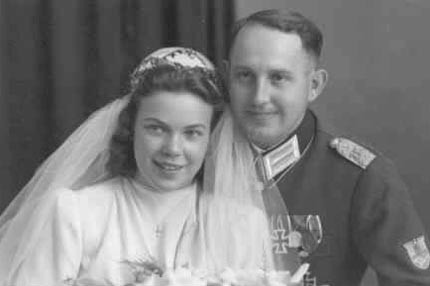
Not a day passed that I didn't think of my husband. These things continually went through my head: What were his last minutes like? Did he die instantly? Where did they bury him? He fell near Ergli, but was buried in Indrikeni? Who took him there? Who from that time is still alive? Captain von Daimling? First Lieutenant Hagerli? Lieutenant Weber? Captain Jochen? First Lieutenant Karn? Corporal Minth? Dr. Schultz? Lieutenant General Wagner? First Lieutenant Bidermann? First Lieutenant Volle? Who is left from the 132. Infantry Division - Infantry Regiment 436/437 - Fusilier's Battalion 132?
It is incredible what thoughts and feelings one develops and how many tears a human being can shed. All those mothers and wives have suffered indescribably. Life went on in Canada with all its challenges, happiness and sorrow. Unfortunately, I lost all contact with my husband's family. In 1970 I received some information from "WASt" (A notification and registry service for relatives of fallen soldiers): My husband was buried in an in-line grave in Indrikeni, 1.5 km south of the train station Licupe …. No. 30. My past would not let me rest.
In 1999 - 55 years later- I began new research. Much easier now due to the new political relations between Latvia and Germany, whereby the computer and the internet played the biggest role and through which, I found people that today have become my friends. The "VDK" (German Association for the Welfare of War Graves) was active everywhere in relocating remains of fallen soldiers. That's where I saw my chance to learn more about this. The first thing was to go to Latvia to find the place where my husband, along with his comrades was buried in in-line graves. Somewhere, unrecognizable now….
In September 2001, my trip into the past began.
It would be a gripping adventure, which has totally changed my life. I'll never forget that day in Indrikeni. It was Sept 12/2001. It was raining, and black clouds would only once let a beam of sunshine through to Indrikeni. There was lightning and thunder and an eerie atmosphere. It was so indescribable that only those that experienced it could understand it. And now there was only the farmer's field, but no sight of any graves. But I knew this was the place. Where exactly? Is this all that I can cling to? Only a small black dog greeted me, which touched me very deeply.
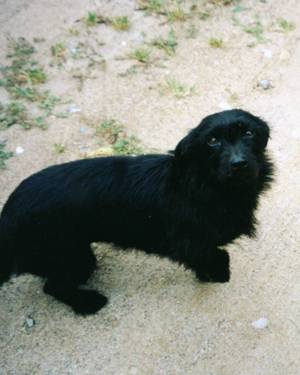
Before I found Indrikeni with the help of friends from Latvia, I was shown other places where soldiers were buried in overgrown fields, around ruins of a church in Kesterats, among tall ferns, where so many met their fate. Too many; what are their names? Do they have people looking for them? Or has the world forgotten them forever? With my own impressions I was ready to start this undertaking.
I renewed my contact with the VDK who advised me that there was a possibility that they would be in the Ergli area in the spring of 2002 to carry on their work with relocating fallen soldiers. All remains would be relocated to the soldier's cemeteries in Riga or Saldus. It is a calming thought to have a proper grave for my husband.
Again, there were delays but what would be the determining factor was the identification. It became clear in spite of the information provided by the army, that it would not be so easy to find these graves. There were no surface signs left to provide any clues. This resulted in more waiting and more questions for people that lived in the area. There were very few witnesses left from the war. Several times I was given the news "unfortunately, we did not find anything". I didn't want to believe that one couldn't find the place. There were so many documents, yet no trace that the Relocation Service could find.
It is now summer of 2002 and the search in Latvia continues. So many test holes were dug but without success. The statements from various people regarding possible grave locations were so different, that one didn't know anymore which is the right information. Every time it would raise one's hope, only to be dashed by failure. It is as if my husband died a second time and there was no one that could change that feeling. New information surfaced constantly. The VDK is making the greatest effort. Who would have thought that with all the available information, the search would be so difficult.
September 2002
Again I packed my suitcases. It was September again - this time 2002. I found 2 of my husband's comrades in Germany of whose existence up until now I hadn't known. I owned a Book " …und litt an meiner Seite" which First Lieutenant Biderman one of his comrades had written. It was the story of the 132nd Infantry Division. I would get to know him and First Lietenant Volle. Those were wonderful hours in which they recalled all the stories that told of how those men stuck together at that time. On this occasion I learned of how my husband had been killed.
An excerpt from the book:
"After a long time of fighting battles while retreating, we were again under the command of the 437th Regiment led by Major Ochssner, an old warhorse from the 437th. He had heard of the courageous resistance by the last battalion of the 437th at Ergli and at Ei- Höhe. As he met the tall First Lieutenant Volle and me in our tired, tattered and dirty state just like the rest of the 120 men of the battalion after our relief at the church in Ergli, he stroked our unshaven cheeks with both hands like little boys, his eyes moist …."
Another excerpt:
"To the west of Modohn and Ergli the battalions and regiments of the 132nd Infantry Division were battling the opposing forces who far outnumbered them in men and equipment. After those battles, the 437th regiment had to be disbanded due to the high casualties and losses. Near Ergli, on the 16th of September, the last commander of the 437th regiment, Major Ochssner a highly decorated soldier found his death. During the Russian campaign he had been wounded eight times. Just recovered from his last wound this courageous and unforgettable officer met his soldier's fate".

I followed the tracks of the 132nd I.D. wherever the last battles took place. In old dugouts, throughout the bushes, - searched every corner, starting with the Ei-Höhe, where a battle with an unbelievable number of casualties had taken place.
In the cemetery in Ergli one can still see the pockmarks from the grenades on the gravestones. Soldiers' cemeteries are filled with Russians, Latvians and Germans. What unbelievable number of dead everywhere. I visited on a daily basis the field where my husband and 35 other soldiers were buried. But to date, any excavations had been unsuccessful. The VDK in general follows every lead, every sketch, and all documentation that is available. Everything is researched and most often with success, - then the remains are exhumed and buried elsewhere.
I was able to witness one of those exhumations. These were soldier's graves near what used to be an army hospital. This would be an experience that touched me the most. The excavator started by skimming about 50cm of the overburden. Then it would be continued by shovel. As the earth caved a little at one spot the digging was continued by hand. A worker from the VDK team donned rubber gloves and with a small scraper slowly removed the earth. Once he made contact with bones he would start at the feet and work his way up until the whole skeleton was exposed and peacefully greeted the 21st century. This one had no ID tag, but was very well preserved except for a serious head wound from a grenade. The brain was still there. That is what fascinated me the most and made me wonder how this organ, although shrunk to fist size could survive for 58 years. Every single bone was deposited in a small gray plastic coffin. Then the gravesite would be searched with a metal detector. They found metal buttons, metal grommets from a tarpaulin and a 5 Pfennig coin. At the time my thoughts went into a 1000 directions and I'm unable to describe my feelings. It's just such an experience where words are not enough … I thought at that moment I was in another world… Everything that was found would be recorded. The next one was a very big man. He had a leather pouch, which contained his ID tag. He had gold fillings in his teeth and a couple of bridges. He also had a head wound, and again his brain was in tact. The next one was only partially there. He was missing a leg. The other one still had a boot on. A large rubber band indicated that they had tied off a main artery at his hip. Half of one arm was missing and his head had serious damage. Again the brain was there. Shoulder insignia of a Lance Corporal in the Artillery, in red, - metal grommets from the tarpaulin and an ID tag…. I thought of his family, - what would they say when they receive this information? Will there be someone that thinks of him? What grief led to his death? And for what?
And so it went. One after the other. There are so many more that will return to a worthy grave at a soldiers' cemetery, where hopefully some of them will be visited by their loved ones. How gently they were returned to the world and how peacefully they lay in their graves.
Now it is October 2002 and I'm home again as Latvia slowly gives in to winter. Thinking back to a month ago, there on the field where my husband was buried, we met with neighbours, and a witness of that time, who was sure where the graves were. Even for the VDK it's a needle in the haystack without clues or markings. Time was running out. Not many people from that era are still living. Quite often the information was contradictory. What the VDK was doing, however, deserves the highest recognition. All I could do at that time was leave a flowerpot with roses in the middle of the field. It was the 16th of September the day of his death…

And so, I had to say good-bye again. The Cranes had left, - the Storks would be back in the spring. The flowers were still blooming in Indrikeni and one can't find a better place to rest in peace. One Latvian lady said to me: "Your husband rests well in Latvia's earth"
I'm always trying - mostly unsuccessfully - after so many years to find some inner peace. Slowly I'm beginning to doubt that that will ever be possible. The shadows of the past are constant companions and the pain remains. Now it means waiting again. In my mind, I prepare myself that nothing will be found. But hope is still present … I just can't give up …. The coincidences continue to play a role, hopefully for my benefit.
The news came from a neighbour of the Indrikenihof, that her mother remembered the name of the son of the man that was the owner of the Indrikenihof during wartime. It was her that had told me the comforting words "Your husband rests well in Latvia's earth" How could I only thank her? It was like a life ring was thrown at the last minute. Now he is a new witness of that time and described and showed where the graves really were. The irony of it all is that last year I had a dream in which I met my husband at the very same spot. It was the only happy dream after 58 years - but it was never a reason to dig at that spot.
Are we entitled to have legitimate hope after all those years and unsuccessful research? Calming thoughts for the Christmas season. Winter is everywhere and there is time to forge new plans. I have prepared everything for a flight to Riga in April of 2003. Slowly, Latvia with its trusted friends is becoming my second home. Now I'm trying to inject some optimism into the month of April. This time those 35 men have to be found. And if so - then another trip in 2004 will be in the works, because then I'll have a grave, which I can visit, with a tombstone which will have my husbands name on it. In the meantime, time to dream and hope until April 2003.
2003:
A new year has begun, already with major plans, namely my move from East to Western Canada, 4700 km and with that, further away from Europe, and from Latvia. But what's a few kilometers? Again I was in touch with the VDK Service in Latvia and I was assured, that in April they would dig again in Indrikeni.
23. April 2003:
Again I packed my suitcases and arrived in Riga on April 23/03. From the previous year's experiences with the exhumations, I was mentally prepared for anything. This time it has to work. It's the last hope.
24. April 2003:
On April 24, I was in Indrikeni with the VDK-Team and despite a blue sky there was a constantly blowing, freezing east wind. The storks were there, but spring had not yet awoken. The little black dog greeted me again. Here I'll have to describe my more personal impressions. The excavator, as directed by the latest witness, began to dig approximately 100 meters from the Indrikenihof. I stood spellbound, but he ended up too far to the left, and we found nothing. Time to quit there. In my dream it was more to the right…. Then the whole team searched the potato field just below the area where they dug last year. Pieces of bone and materials were found and it was resolved that these things didn't just fall from the sky. So, the excavator started again to carefully dig a trench and shortly after made contact with the first body. We were so close last year. Only 50m away. My flowerpot still sat in the middle of the field - roses frozen.
Now everything would be done very carefully. After 50cm of digging with the excavator, the handwork started. The heavy clay earth and the moisture did not make it any easier. However, by nightfall we had found 11 soldiers and with every ID tag that came into daylight, my heart stopped. There they were, seriously wounded, they gave their life. Every time I asked myself - for what?
Again I found myself in another world, with thoughts that no one can comprehend unless one was personally tied to these events. It was getting late and we had to break off for the day.
25. April 2003:
It was early that we left for Indrikeni. During the night e-mails had arrived from the VDK from Kassel and Berlin with directions and lists of the graves in Indrikeni, which until now had not been known. Apparently there were 38 graves according to the latest information. We continued where we had left off the previous day. Again there was a bitter cold wind and I froze from inside and out and my expectation strained my nerves to the limit. Everything was done with the highest degree of caution. The experienced workers worked on their knees in the ditch to expose the men's remains. It was handwork in the truest sense. Everything was recorded and each soldier's remains would be lovingly placed into a small container. There were boots, spurs, pieces of uniforms, bandages, and small personal belongings that came to light. Each container would be placed in a numbered blue VDK plastic bag.
Meanwhile we had arrived at grave number 29. My husband should be in the next one. The team leader found wooden boards from which it was deduced that this was a coffin. As he dug further around the coffin, water started to appear in the grave, which probably had not been able to drain because of the coffin. This had to be drained before more work could be performed. It was now up to me to turn away, but there was no force in this world that could have removed me from this place. Since Sept. 16/44 I have wanted to have my husband back. I knew what I could expect. What I didn't know until this moment was that they had buried him with full honours in an oak casket. The wood had survived except for the lid, which had caved in. Oak leaves and Birch twigs lay on and inside the casket. He still had his socks on.
I stood by the grave and beside me sat the little black dog from the farm with whom I had made a particular friendship in the first year. He alternately glanced into the grave and at me. In this uncanny wretchedness, it was good to have him by my side. He seemed to understand it all. Handful by handful the earth was cleared until the ID tag appeared - - it was my husband: Major Heiner Ochssner. The shoulder pieces of the uniform were still in tact; then there was a piece of strap from the pistol holster, a few metal strands from the collar decorations and many bandages. The latter were difficult to explain, because he had died on the spot and normally one wouldn't bandage up a corpse. His head was bandaged up because that was his mortal wound. That soothed the endless sorry sight. I didn't have to look into a dead face.
I cannot find any words to describe my feelings and just want to say that I said my good-byes. I would have liked to spend several hours next to the casket. It was the highlight to find my husband but to see him again was also the lowest point.
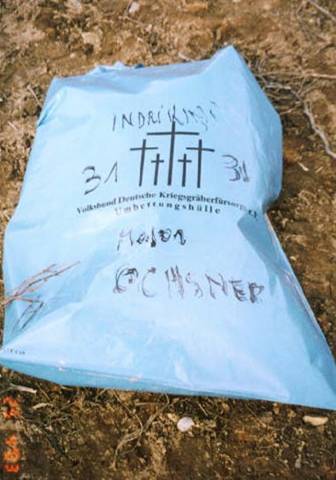
The next day, 6 more soldiers were found as well as 2 live hand grenades, which later were detonated by the Latvian Home Defense Squad.
That was the end of my 3-year search and I was glad that so many comrades have been found. Only four of them had no ID tags. All of them will be transferred in white caskets in the next couple of weeks to the Soldiers' cemetery in RIGA-BEBERBEKI. There, they will find their quiet peace and maybe some of their relations that had been searching for them will appear. I myself will finally be able to stand by a grave for which I have waited so endlessly. My Latvian friends will ensure that there will always be flowers on the grave.
Everything seems so unlikely yet, but I hope that inner peace will come. Had it not been for all the efforts by the VDK and the help of the friends in Latvia, I would never have seen my husband again. For that I will always be thankful. With me, are the beautiful memories, the stories from our common life, trusted relatives and friendships upon which, one can build.
Dorle Ochssner
Canada 6. May 2003
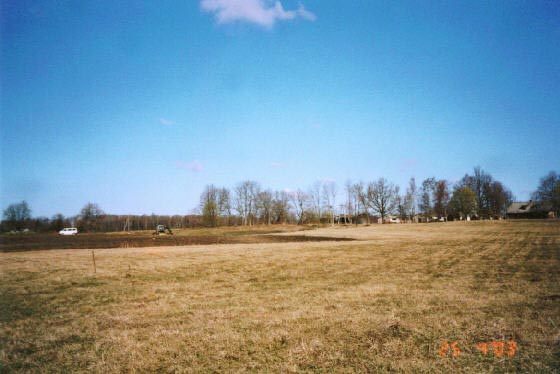
Indrikeni …………………………Where?????
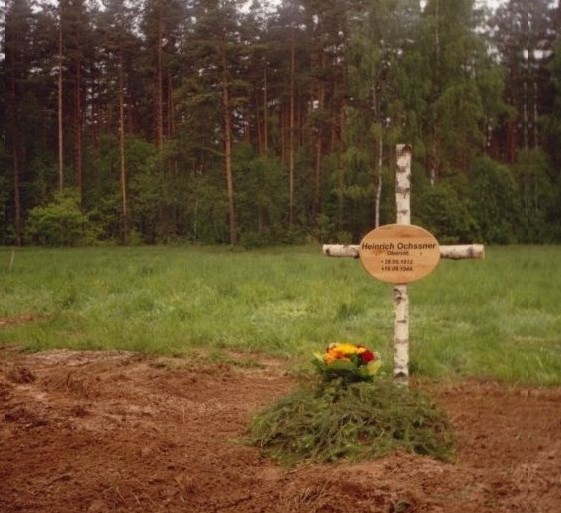
Final resting place in the new Soldiers' Cemetery in Riga-Beberbeki. May 2003
© Dorle Ochssner
 Deutsch |
Deutsch |  Englisch
Englisch







 Deutsch |
Deutsch |  Englisch
Englisch